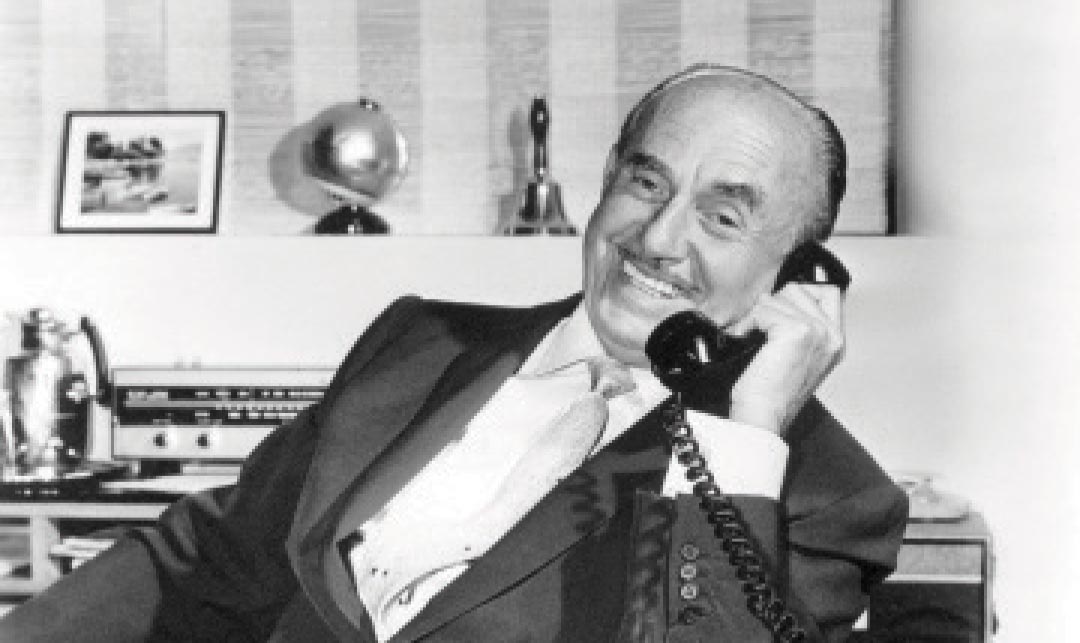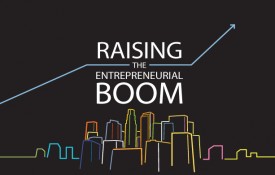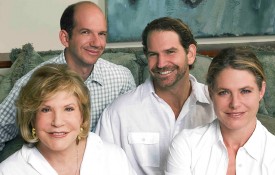In 1917, Jack Warner was summoned to Los Angeles by one of his older brothers, Sam, to create a foothold in the fledgling movie-making business. The Warner brothers – Albert, Harry, Sam, and Jack – were already well established in the movie exhibition business but saw the real opportunity in producing movies. By 1927, their studio was the first to produce a movie with both sound and dialogue, The Jazz Singer, which went on to set the new standard for the motion picture industry.
Jack was known for his perfectionism and bold leadership style. He sought out the best scripts and story lines, and found creative ways to drive down production costs. His business strategy was “If I’m right 51 percent of the time, I’m ahead of the game.” He underestimated himself. By 1973, the year he walked off the Warner Bros. lot into retirement, he left behind one of the world’s most recognizable brands that went on to produce thousands of movies, television programs, and animated features.
The influence of the film studio titans and the generations of creative talent that followed can be seen all over Los Angeles today – world-class production facilities, skilled technicians, creative talent, and savvy business minds. Los Angeles’ colleges and universities – the five regional California State Universities, CalArts, UCLA, USC, Caltech, and Otis College of Art and Design – are also training the next generation of directors, producers, artists, writers, designers, and technicians.
With the advancement of technology and the growing focus of content and entertainment innovation, funding, ideas, and workers are flowing into Los Angeles at record levels. Los Angeles is now home to more technology workers (368,510) than Silicon Valley (313,260), according to an October 2014 study by the Los Angeles County Economic Development Corporation Institute for Applied Economics. More than $500mm has flowed to Los Angeles from Silicon Valley investors in the past two-and-a-half years, according to recent data from Thomson Reuters.
Los Angeles may not have the “tech cache” of Silicon Valley (ironically, also the title of an HBO show filmed in Los Angeles), but what it does have is a perfect environment in which entrepreneurs can interact with a diverse and broad range of industries that are focused on leveraging the Internet to reshape how people shop, chat, watch, and play.
The influence of the film studio titans and the generations of creative talent that followed can be seen all over Los Angeles today – world-class production facilities, skilled technicians, creative talent, and savvy business minds.
Los Angeles-based tech companies such as Snapchat are creating platforms for the distribution of 10-second videos viewable online. A new startup called MiTú, which received significant financial backing from Hollywood film executives, is harnessing the power of content creators to become a virtual television network that counts 25 percent of all Latino YouTube viewers as the key part of its audience. Content creators Geek & Sundry were acquired by Legendary, a leading media company, that co-produces films with major studios, including NBC Universal and Warner Bros. Entertainment. Geek & Sundry set out to change the entertainment technology landscape from the outside; now, they are shaping it from the inside.
To foster this developing ecosystem, public policymakers, business leadership, and civic organizations must work together to develop a more robust economic development strategy that encourages more public/private partnerships and targeted incentives for businesses to remain, locate, and invest in the Los Angeles region.
The California Film Commission’s recently enhanced film-and-television tax credit program is a step in the right direction at the statewide level. Locally, Los Angeles Mayor Eric Garcetti’s aggressive efforts to court new technology companies with incentives such as a three-year business tax exemption and helping companies fast track their building permits. More can be done.
Major American cities, including Philadelphia and Seattle, have created “Innovation Districts.” These districts foster public-private partnerships between the city and private sector developers looking to invest in underutilized and long-neglected properties – warehouses, maintenance facilities, parking lots – and re-purposed them as locations for both educational entities and private sector businesses.
Philadelphia’s newly developed University City Science Center utilized the resources of educational and health care institutions. Drexel University, the University of Pennsylvania, and Children’s Hospital of Philadelphia all provide the type of research and education infrastructure that complement and cross-pollinate with biotech firms – all along a local transit line.
The world is a different place than it was a century ago; movies can now be produced on a personal computer and movie screens can now fit in one’s pant pocket.
In Seattle’s South Lake Union (SLU) district, the city entered into a public-private partnership to revitalize a run-down industrial district, attracting both life sciences and medical technology institutions, along with traditional private industry. Today, Amazon.com’s headquarters is located in the district, and the neighborhood’s resurgence has been welcomed by businesses and residents alike. It, too, includes a major transit component that improves the quality of life within and around the neighborhood.
Los Angeles should adopt this model by re-zoning targeted neighborhoods in the city and county to better link anchor institutions (colleges and universities) with startups, incubators, accelerators, and mass transit. One immediate opportunity is Metro’s Expo Line, which is on track to reach the beach city of Santa Monica by 2016.
In 2012, the Los Angeles Mayor’s Council on Innovation and Industry reported the city owns 740,000 square feet of properties along the Expo Line that currently connects Downtown with Culver City. Underutilized properties could be wired with ultra high-capacity Internet infrastructure that would incentivize private-sector investors to develop next-generation working environments, including tech-friendly amenities, quality community space, and hands-on workshops for entrepreneurs. Los Angeles’ universities and colleges house the right talent, resources, and bandwidth to serve as the catalyst for a pilot project for job-creating “innovation districts” for bio-tech, tech companies, entertainment firms, and advanced manufacturing. California State Senate Bill 628 recently created Enhanced Infrastructure Financing Districts as a new economic development tool and there has never been a better time to put it to good use.
The world is a different place than it was a century ago; movies can now be produced on a personal computer and movie screens can now fit in one’s pant pocket. What has not changed are the lessons we can learn from the Warner brothers – turning ideas into reality requires action and being bold. It requires adapting to change, taking risk, and embracing new technologies.That is the brand that Los Angeles should strive for. That is the message Los Angeles needs to send to the world’s investors, entrepreneurs, and skilled talent.














































